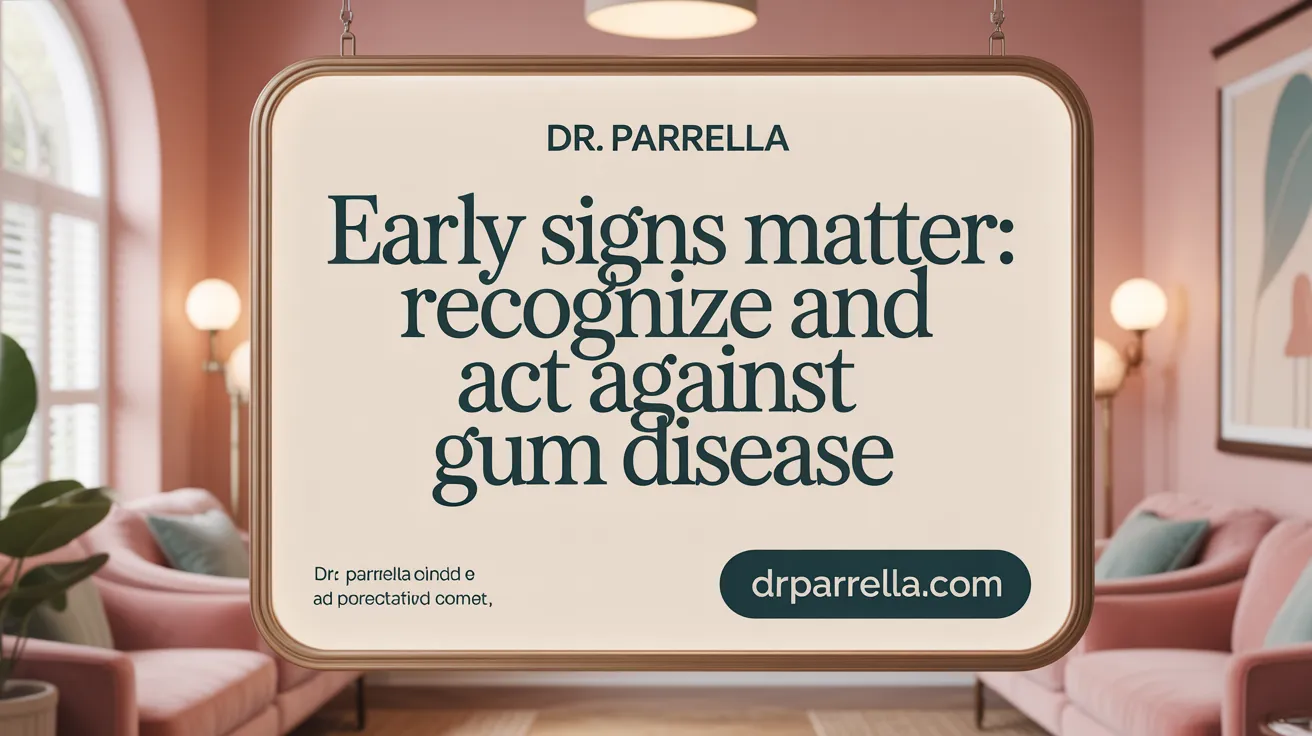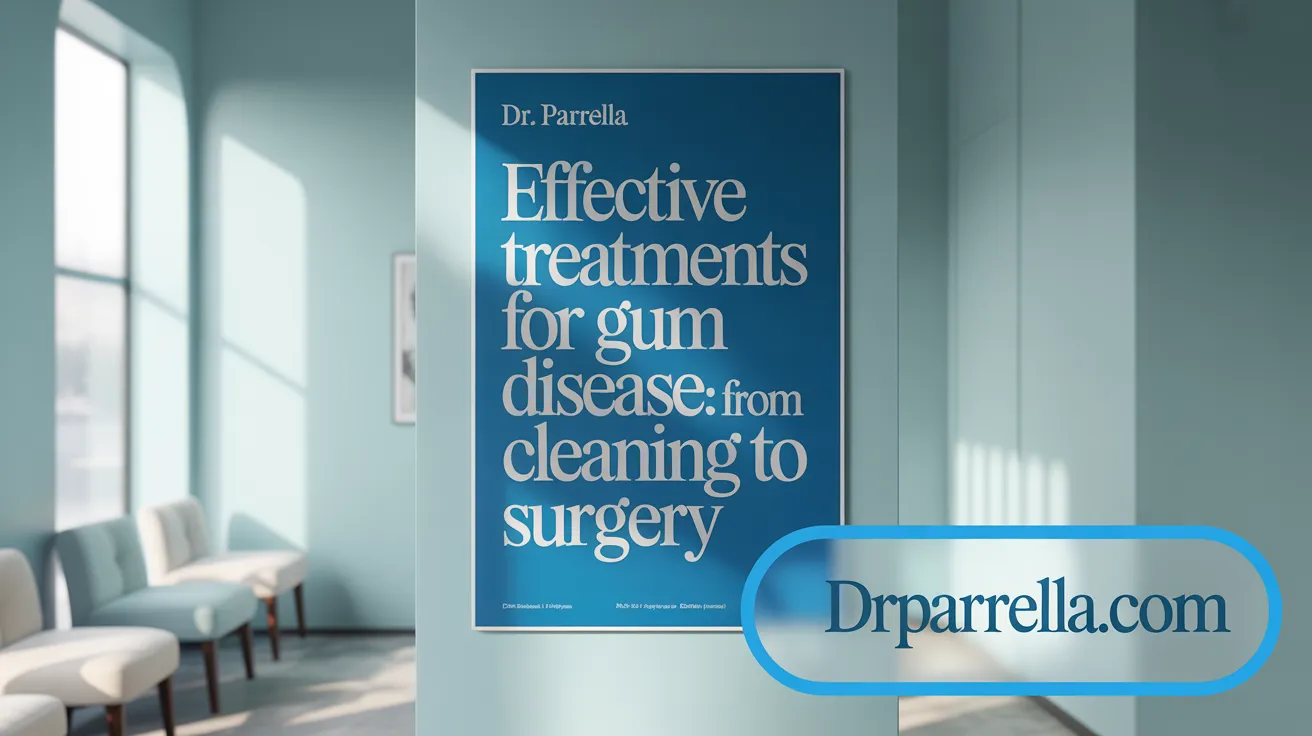Understanding the Importance of Gum Care
Healthy gums are fundamental to maintaining strong teeth, a radiant smile, and overall well-being. Despite their crucial role, gums are often overlooked in daily oral hygiene, leading to conditions like gingivitis and periodontitis that threaten dental and systemic health. This article unpacks the causes, prevention, and treatment of gum disease to empower readers with knowledge and practical steps for effective gum care.
Foundations of Healthy Gum Maintenance: Daily Hygiene Practices

What daily oral hygiene practices support healthy gums?
Maintaining healthy gums begins with thorough daily oral hygiene practices. Brushing your teeth twice a day using a soft-bristled toothbrush is crucial. Position the brush at a 45-degree angle toward the gum line to effectively remove plaque and bacteria without damaging delicate gum tissue.
Why is flossing and interdental cleaning important?
Daily flossing or using interdental brushes helps clean the tight spaces between teeth where toothbrushes cannot reach. This removes trapped food particles and harmful plaque, reducing the risk of inflammation and gum disease. See guides on daily flossing benefits and flossing techniques.
How does antibacterial mouthwash contribute to gum health?
Using an antibacterial, alcohol-free mouthwash daily complements brushing and flossing by reducing oral bacteria and controlling plaque buildup, which are common causes of gum irritation and disease. For more detail, see importance of antibacterial mouthwash and therapeutic mouthwashes for gum care.
What impact does tobacco use have on gums?
Tobacco use, including smoking, severely impairs gum health by weakening the immune response and slowing down healing. It increases the risk of gum infection, worsens inflammation, and elevates chances of developing severe periodontal disease. More information at effects of tobacco on gum disease and avoid tobacco for gum health.
How does fluoride toothpaste aid in gum maintenance?
Fluoride toothpaste strengthens tooth enamel, helping prevent decay that could exacerbate gum problems. It also assists in protecting gums from bacterial attacks, contributing to overall oral health.
What role does diet play in gum health?
A balanced diet rich in fruits, vegetables, vitamin C, calcium, and omega-3 fatty acids nourishes the gums and supports immune defenses. Limiting sugary foods and drinks reduces harmful bacteria that produce acids harmful to teeth and gums. See diet for healthy gums and vitamin C for gum health.
How does hydration and saliva protect gums?
Staying well-hydrated stimulates saliva flow, which naturally cleanses the mouth by washing away food debris and neutralizing acids. This reduces bacterial growth and protects gum tissue. Learn more at hydration and gum health.
What are early signs of gum disease to watch for?
Recognize early symptoms such as red, swollen, tender gums that may bleed when brushing or flossing. Early detection allows for timely intervention before the condition worsens. See early signs of gum disease and signs of gum disease overview.
Adopting these daily hygiene practices forms the foundation for strong, healthy gums and a vibrant smile.
Recognizing and Understanding Gum Disease: Signs, Stages, and Risks

What is Gum Disease and What Causes It?
Gum disease, also called periodontal disease, is an infection and inflammation of the gums and tissues that support teeth. It mostly arises from plaque buildup, a sticky film of bacteria along the gum line. If this plaque isn't removed, it hardens into tartar, allowing bacteria to infect the gums and surrounding bone.
What Are the Symptoms and Warning Signs?
Early gum disease, known as gingivitis, shows signs such as red, swollen, and tender gums that may bleed during brushing or flossing. Other symptoms include persistent bad breath, soreness, and gums that pull away from the teeth. If untreated, it advances to more severe stages with loose teeth and changes in bite.
How Does Gum Disease Progress Through Stages?
- Gingivitis (Early Stage): Reversible inflammation with swollen, red gums and bleeding.
- Mild to Moderate Periodontitis: Deeper infection causes periodontal pockets, gum recession, and bone loss.
- Advanced Periodontitis: Significant tissue and bone destruction with possible tooth loss.
What Are the Risk Factors?
Factors increasing gum disease risk include:
- Smoking and tobacco use
- Diabetes and poor blood sugar control
- Hormonal changes like pregnancy and menopause
- Genetic predisposition
- Stress and weakened immune response
- Poor oral hygiene (Proper oral hygiene techniques)
- Systemic diseases and certain medications
Can Gum Disease Be Contagious?
Bacteria causing gum disease can spread through saliva via kissing or sharing utensils. However, the disease itself develops mainly due to individual oral hygiene and immune response.
What is the Connection Between Gum Disease and Overall Health?
Gum disease is linked to several systemic health problems, including heart disease, stroke, diabetes complications, respiratory infections, pregnancy-related issues, and cognitive decline such as dementia. Managing gum health improves oral and general well-being.
Preventing Gum Disease: Proactive Measures for Lifelong Gum Health

How can gum disease be prevented?
Preventing gum disease starts with diligent oral hygiene practices. Brushing twice a day using fluoride toothpaste and a soft-bristled toothbrush, positioned at a 45-degree angle with gentle circular motions, effectively removes plaque from teeth and along the gum line. Daily flossing or interdental brushes clean the spaces between teeth and below the gumline where a toothbrush cannot reach, reducing bacterial buildup.
Regular dental visits for professional cleanings and check-ups, typically every six months, are essential. These remove hardened tartar that cannot be removed by brushing alone and help monitor gum health, allowing early detection of inflammation or gum disease progression, especially important for high-risk individuals (Regular dental check-ups, Dental visits every six months.
What brushing and flossing techniques help maintain gum health?
Proper technique is vital: toothbrushes should be soft-bristled, and careful, gentle strokes prevent gum damage (Soft-bristled toothbrush usage. Flossing involves sliding about 18 inches of floss between teeth, curving it around each tooth and moving it beneath the gumline (How to floss correctly. Replacing toothbrushes every three to four months or after illness ensures effectiveness (Toothbrush replacement every 3-4 months).
How do diet and lifestyle impact gum health?
A diet rich in vitamin C (found in citrus fruits and leafy greens), calcium (from milk, cheese, and nuts), and omega-3 fatty acids supports gum tissue repair and reduces inflammation. Limiting sugary foods decreases bacteria that feed on sugars to form plaque. Hydration supports saliva flow, which naturally cleanses and neutralizes acids (Healthy diet and gum health).
Quitting tobacco is critical, as smoking contributes significantly to gum disease risk by impairing healing and immunity, increasing tartar formation, and causing deeper gum pockets. Avoiding tobacco also lowers the chance of oral cancer (Avoiding tobacco for oral health, Health risks of smoking on gums).
What additional tools assist in gum disease prevention?
Therapeutic mouthwashes with antimicrobial agents and ADA approval reduce plaque and gingivitis when used daily (Importance of antibacterial mouthwash, Therapeutic Mouthwash for Gum Care). Special oral hygiene aids like water flossers and tongue scrapers complement brushing and flossing by removing bacteria in hard-to-reach areas (Tongue brushing benefits.
How should special conditions like dry mouth be managed?
Dry mouth reduces saliva’s protective action, increasing the risk of gum issues. Drinking water regularly, using saliva substitutes or artificial saliva gels, and avoiding irritants like alcohol and tobacco help maintain oral moisture and support gum health (Dry Mouth Causes and Remedies).
Why is risk assessment important?
Understanding personal risk factors—such as genetics, diabetes, medications, stress, and hormonal changes—guides preventive strategies and frequency of dental evaluations. Annual comprehensive periodontal exams by a dental professional help tailor care and intervene early (Annual comprehensive periodontal evaluations, Early detection of gum disease.
Taking these proactive steps consistently promotes lifelong healthy gums, preventing gum disease, reducing complications, and supporting overall well-being.
Therapeutic Approaches to Gum Disease: From Non-Surgical to Advanced Treatments

What treatments are available for gum disease?
Treatments for gum disease vary depending on the stage and severity of the condition. Early-stage gum disease, such as gingivitis, often can be reversed with professional dental cleaning and improved oral hygiene practices. For mild to early periodontitis, scaling and root planing are common procedures that remove plaque and tartar below the gum line, smoothing root surfaces to prevent further bacterial buildup.
How are scaling and root planing performed?
Scaling involves scraping off plaque and tartar from teeth and beneath gums, while root planing smooths the roots to help gums reattach firmly to teeth. This deep cleaning is typically done with local anesthesia for comfort. For more details, see scaling and root planing procedure.
What role do antibiotics and antimicrobial agents play?
Antibiotic therapies, including topical gels or antiseptic chips such as chlorhexidine, are used alongside mechanical cleaning to reduce bacterial infection and inflammation. Oral antibiotics like doxycycline may also be prescribed in some cases to support healing. More information on antibiotic therapy for gum disease can be found here.
What surgical interventions are available?
Advanced gum disease may require surgical treatments such as pocket reduction surgery (flap surgery) to remove infected gum tissue and reduce deep spaces where bacteria grow. Bone grafting and gum grafting repair damaged bone and gum tissue, while guided tissue regeneration promotes regrowth of lost structures. Laser therapies, including LANAP (Laser Assisted New Attachment Procedure), offer minimally invasive options to remove diseased tissue and stimulate healing with less discomfort.
How are regenerative techniques like PRF and PRP used?
Platelet-rich fibrin (PRF) and platelet-rich plasma (PRP) are biological treatments that use the patient’s own blood components to stimulate tissue regeneration and repair in affected gums and bone. More on PRF and PRP treatments can be found on specialized periodontal sites.
What does post-treatment care involve?
After treatment, maintaining excellent oral hygiene is essential, including brushing, flossing, and possibly using antibacterial mouth rinses. Regular dental check-ups and professional cleanings help monitor and manage the disease. Lifestyle changes like quitting smoking improve treatment outcomes and reduce recurrence risk. Check out more about effective oral hygiene routine tips and quitting smoking for gum health.
Why is early treatment and ongoing management important?
Gum disease is manageable but not curable. Early detection allows for less invasive treatments that can stop disease progression, preserve teeth, and maintain healthy gums. Continuous care and monitoring are vital to prevent relapse and potential tooth loss. Learn about the importance of early detection and preventing tooth loss from gum disease to maintain long-term gum health.
The Systemic Impact of Gum Disease and the Importance of Comprehensive Care

How does gum disease affect overall health?
Gum disease, also known as periodontal disease, significantly impacts overall health. It is linked to a higher risk of serious systemic conditions such as heart disease, stroke, diabetes complications, respiratory infections, and adverse pregnancy outcomes like premature birth and low birth weight. The chronic inflammation and bacteria present in gum disease can enter the bloodstream, causing systemic inflammation and contributing to these conditions (oral health and overall health).
Maintaining good periodontal health is especially crucial for individuals with diabetes. Proper gum care can help improve blood sugar control and reduce the severity of diabetic complications. Additionally, research has shown associations between gum disease and cognitive decline, including Alzheimer's disease (oral health and systemic diseases.
How periodontal health affects diabetes, heart disease, stroke, and pregnancy
Poor gum health increases inflammation in the body, which can exacerbate cardiovascular problems, increasing the risk of heart attack and stroke. For pregnant women, untreated gum disease raises the chances of early labor and low birth weight babies. Diabetes and periodontal disease have a bidirectional relationship, where each condition can worsen the other (oral health and systemic health.
The role of oral care in overall health management
Consistent oral hygiene practices, such as brushing teeth twice daily with fluoride toothpaste, flossing daily, and regular dental visits, are essential for controlling periodontal disease. Periodontal therapy, including professional cleanings and treatments, reduces harmful bacteria and inflammation. These measures not only preserve oral health but also benefit systemic well-being.
Monitoring and collaboration between dental and medical professionals
Integrating dental care with medical management enhances patient outcomes. Coordination between dentists, periodontists, and physicians helps in early detection and control of gum disease and associated systemic risks. This collaborative approach ensures comprehensive care addressing both oral and overall health (CDC and Gum Disease Monitoring).
Health benefits of maintaining gum health
Healthy gums lead to fresher breath, stronger teeth, and a reduced need for invasive dental procedures. More importantly, they decrease systemic inflammation, potentially lowering risks of heart disease, stroke, diabetes complications, and certain cancers. Promoting ways to keep gums healthy is thus vital not only for oral well-being but for maintaining general health throughout life.
Practical Tips and Lifestyle Choices for Supporting Gum Health
What lifestyle habits support healthy gums?
Eating a well-balanced diet plays a vital role in maintaining healthy gums. Foods rich in vitamin C, such as citrus fruits, strawberries, and broccoli, help support gum tissue and reduce inflammation. Calcium sources like dairy products, nuts, and leafy green vegetables strengthen the bone that supports teeth. Omega-3 fatty acids found in fatty fish and walnuts contribute to overall gum health. For more details, see gum health maintenance.
Hydration is equally important because it promotes saliva production. Saliva naturally cleanses the mouth by washing away food particles and balancing mouth acidity, which helps prevent bacterial growth contributing to gum disease.
Avoiding harmful habits such as smoking and excessive alcohol intake significantly lowers the risk of gum disease and oral cancers. Tobacco weakens the immune system, making it harder for gums to heal and fight infections. Learn more about effects of tobacco on gum disease, quitting smoking for gum health, and avoiding tobacco for oral health.
Utilizing appropriate oral hygiene devices further supports gum care. Soft-bristle or electric toothbrushes gently clean without damaging tissues. Interdental brushes and floss remove plaque where toothbrushes cannot reach. Antimicrobial mouthwashes help reduce bacteria and plaque buildup. For proper oral hygiene techniques and oral hygiene routine tips, refer to these resources.
Regular dental check-ups are crucial for early identification and management of gum problems. Personalized care plans based on individual risk factors ensure effective prevention and treatment. Consider importance of regular dental visits and professional dental care for healthy gums.
Special populations such as older adults or people with limited dexterity benefit from adaptive toothbrushes, floss holders, or caregiver assistance to maintain consistent oral hygiene practices. Guidance on adapting oral care for limited mobility can be helpful.
Establishing these habits early and maintaining them promotes strong, healthy gums and prevents progression to serious gum disease. More information about gum disease prevention tips and preventing gum disease with oral hygiene is available for further reading.
Maintaining Healthy Gums for a Lifetime of Smiles
Caring for your gums through daily hygiene, mindful lifestyle choices, and regular dental care is essential to prevent gum disease and its wider health impacts. Early recognition and treatment of gum issues preserve not only your smile but also overall well-being. By embracing effective brushing, flossing, a nutritious diet, and professional guidance, you build a strong foundation for healthy gums that support your teeth and systemic health throughout life.
